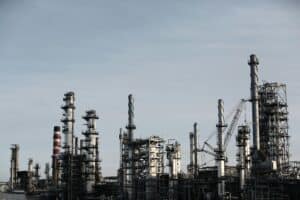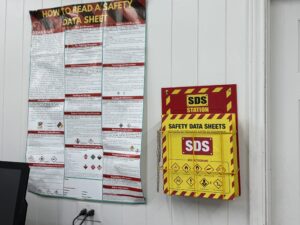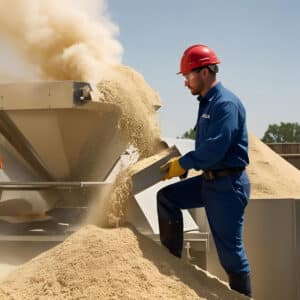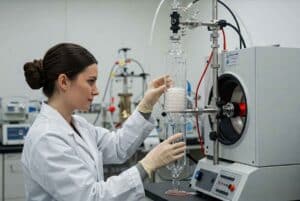We also offer
What Is a Preliminary Hazard Assessment (PHA)?
A Preliminary Hazard Assessment (PHA) is a proactive safety tool used early in the design or development phase of a project, process, or system—especially in high-risk industries like chemical manufacturing, pharmaceuticals, oil and gas, or medical device development. It identifies potential hazards and evaluates their associated risks before detailed designs are finalized.
PHA helps organizations recognize and mitigate hazards—such as chemical spills, equipment failures, fires, or explosions—before they escalate into serious incidents. This early intervention is critical for ensuring safety, meeting regulatory requirements, and optimizing project outcomes.
Why Conduct a Preliminary Hazard Assessment?
Conducting a PHA offers major safety, compliance, and financial benefits:
-
Early Risk Identification: Pinpoints hazards before they become costly or dangerous.
-
Cost-Effective Design Decisions: Helps avoid expensive redesigns, retrofits, or delays by addressing risks upfront.
-
Enhanced Safety Measures: Integrates safety into design from the start, protecting personnel, assets, and the public.
-
Regulatory Compliance: Aligns your project with industry regulations such as OSHA, EPA, ISO, and FDA requirements.
-
Stronger Decision-Making: Informs process design, control strategies, and resource allocation.
-
Improved Stakeholder Confidence: Demonstrates your commitment to safety to regulators, investors, and clients.
-
Foundation for Detailed Risk Studies: PHA is often the first step before more advanced assessments like HAZOP or LOPA.
What Does a Preliminary Hazard Assessment (PHA) Involve?
At Prime Process Safety Center, we follow a structured, standards-driven PHA process:
1. Hazard Identification
We identify hazards related to materials, equipment, processes, or the work environment—including chemical, mechanical, biological, and ergonomic risks.
2. Risk Analysis
We assess the likelihood and consequence of each hazard using qualitative or semi-quantitative methods.
3. Risk Prioritization
Risks are ranked based on severity and probability, ensuring the most critical issues are addressed first.
4. Evaluation of Existing Controls
We examine current safety systems and protocols to assess how well they reduce risk.
5. Recommendations for Risk Reduction
We suggest additional control measures, such as:
-
Engineering controls (e.g., alarms, interlocks)
-
Administrative changes (e.g., SOPs, signage)
-
Personal Protective Equipment (PPE)
6. Documentation and Reporting
A detailed report includes:
-
Identified hazards
-
Risk rankings
-
Control recommendations
-
Compliance status
7. Stakeholder Engagement
We involve engineers, operators, and safety professionals to ensure a well-rounded and accepted risk assessment.
8. Compliance Verification
We ensure that your systems align with relevant regulatory standards (e.g., OSHA PSM, ISO 14971, CCPS guidelines).
9. Review and Update
We help establish a review cycle to keep the PHA relevant as your processes or operations change.
10. Training and Communication
We provide support to train your team on identified risks and the safety controls required to mitigate them.
Why Choose Prime Process Safety Center
Working with Prime Process Safety Center means partnering with industry-leading safety professionals who bring deep expertise and a practical, hands-on approach. Here’s what sets us apart:
- Process Safety Expertise: Our team has decades of experience in risk identification and mitigation across diverse industries.
- Custom Solutions: We tailor every PHA to your specific process, design, and facility layout.
- Regulatory Alignment: We help you meet OSHA, EPA, ISO, FDA, and other industry standards.
- Early Hazard Mitigation: We support early-phase planning to reduce long-term safety risks.
- Actionable Results: You’ll receive clear, prioritized recommendations that you can act on immediately.
- Comprehensive Documentation: Our assessments provide detailed and audit-ready reports.
- Team Training & Culture Building: We help foster a strong safety culture through engagement and education.
- Ongoing Support: We’re available beyond the initial PHA to help you implement controls and adapt to evolving challenges.
FAQ
1. What is a Preliminary Hazard Assessment?
PHA is a proactive risk evaluation process used to identify and analyze potential hazards in the early stages of a project or process, focusing on potential accidents, their causes, and consequences.
2. Why is PHA important in process safety?
PHA is crucial for early hazard identification, which helps in implementing mitigation measures, ensuring safety, and preventing costly incidents or operational disruptions.
3. When should a PHA be conducted?
It should be conducted at the initial design stages of a new process or facility and whenever significant modifications are planned for existing processes.
4. Who should perform a PHA?
A PHA should be performed by a multidisciplinary team with expertise in process engineering, safety, operations, and maintenance.
5. What are the main components of a PHA?
The main components include hazard identification, risk analysis, determination of potential impacts, and recommendation of mitigation measures.
6. How does PHA differ from other risk assessments?
Unlike detailed risk assessments, PHA is a preliminary evaluation, focusing on identifying hazards and potential risks before detailed planning and development.
7. What types of hazards are assessed in a PHA?
PHA assesses a broad range of hazards including chemical, mechanical, electrical, and operational hazards.
8. Can PHA help in regulatory compliance?
Yes, it helps in ensuring that the design and operation of processes comply with relevant safety regulations and standards.
9. What industries benefit from conducting a PHA?
Industries that handle hazardous materials or complex processes, such as chemical manufacturing, oil and gas, pharmaceuticals, and energy, benefit significantly from PHAs.
10. What happens after a PHA is completed?
After a PHA, recommendations are made for risk mitigation. These recommendations are then integrated into the design and operation of the process or facility and are monitored for effectiveness.
11. What is the Best Practices for Preliminary Hazard Assessment
Engagement of Stakeholders: Involving personnel at various levels in the PHA process ensures a more comprehensive understanding of the potential hazards. Their insights contribute to the development of effective risk management strategies.
Transparent Communication: Clear and transparent communication of the findings and recommendations from the PHA is essential. This promotes awareness and understanding among all stakeholders, fostering a culture of safety. Integration with Safety Management Systems: Integrating PHA findings into an organization’s safety management systems ensures that the identified hazards are consistently addressed and that controls are effectively implemented.














